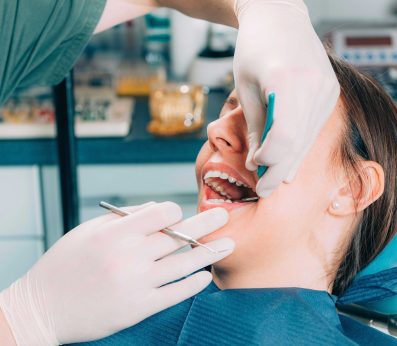
Artificial intelligence (AI) is being increasingly integrated into dentistry to assist in various tasks, such as diagnosis and treatment planning. Here are some examples of how AI is being used in dentistry:
1. Diagnosis: AI can assist in the diagnosis of dental conditions by analyzing digital images such as X-rays and CT scans. Machine learning algorithms can be trained to recognize patterns and identify abnormalities in these images, which can help dentists make more accurate diagnoses.
2. Treatment planning: AI can also assist in treatment planning by analyzing patient data such as medical history, dental records, and imaging results. This data can be used to develop personalized treatment plans that take into account the patient’s unique circumstances.
3. Predictive analytics: AI can be used to predict the likelihood of certain dental conditions developing in patients based on various risk factors such as genetics, lifestyle, and medical history. This information can be used to develop preventive strategies and early intervention plans to reduce the risk of developing these conditions.
4. Robotics: AI-powered robots are being developed for use in dental procedures. These robots can assist in tasks such as tooth preparation, drilling, and filling, allowing for greater precision and efficiency in these procedures.
5. Patient communication: AI-powered chatbots and virtual assistants can be used to improve patient communication and education. These tools can provide patients with information about their dental conditions, treatment options, and oral hygiene practices, and can answer common questions about dental care.
Overall, AI has the potential to improve the accuracy and efficiency of dental diagnosis and treatment planning, as well as enhance patient communication and education. However, it is important to note that AI should be used in conjunction with human expertise and judgment, and not as a replacement for it.



